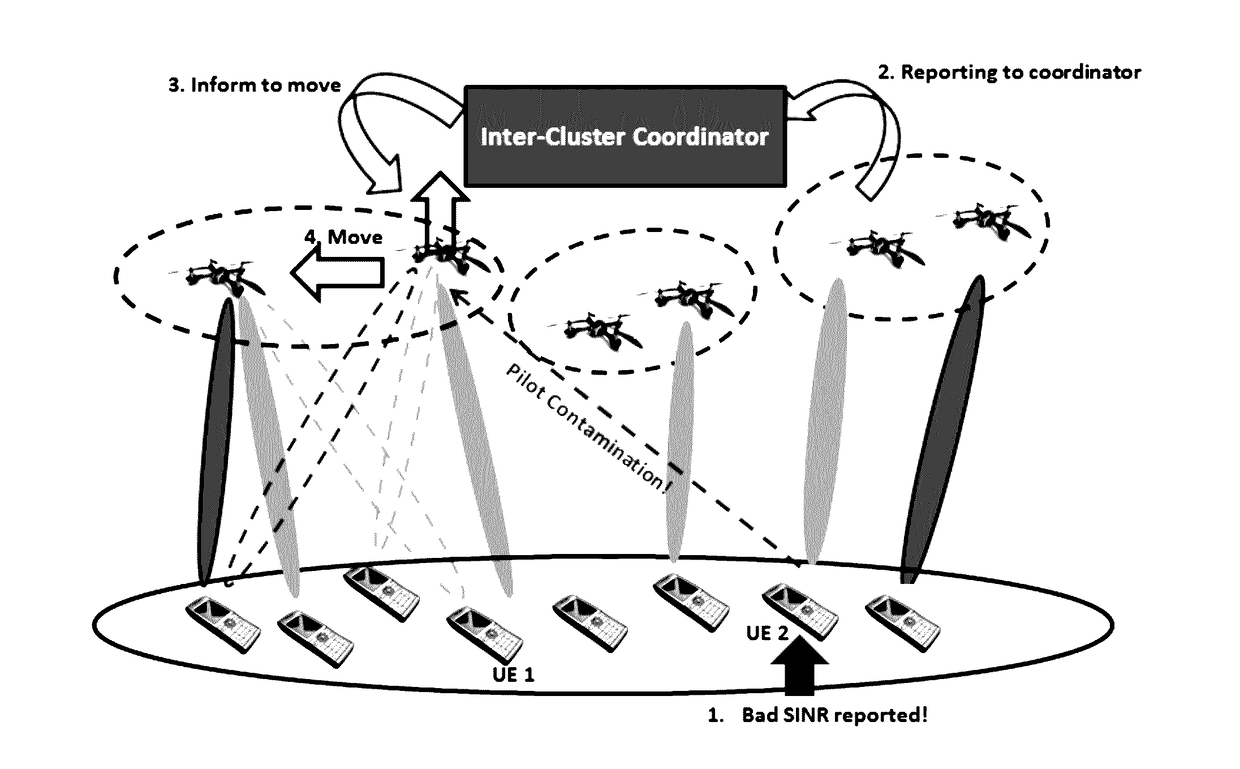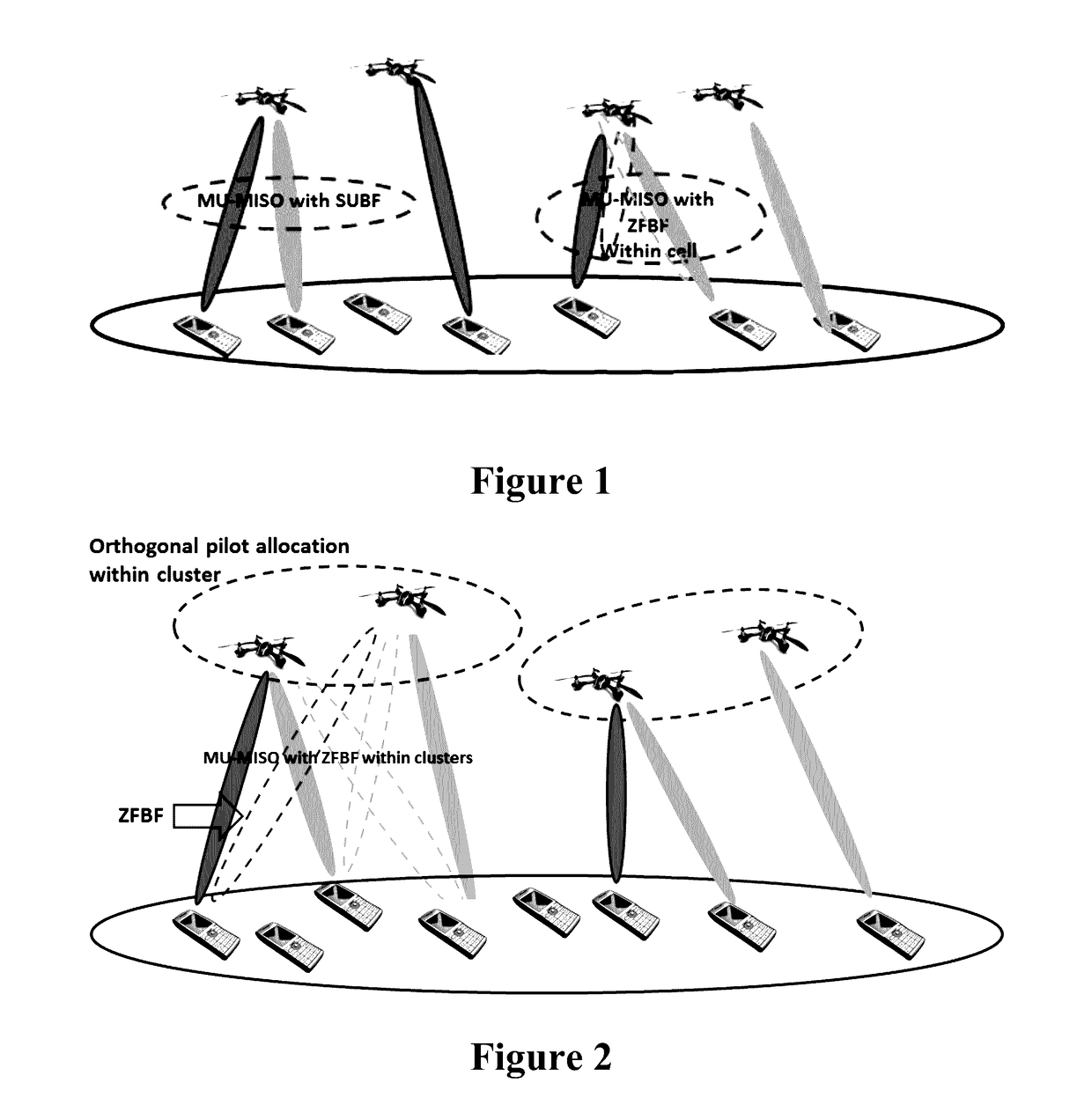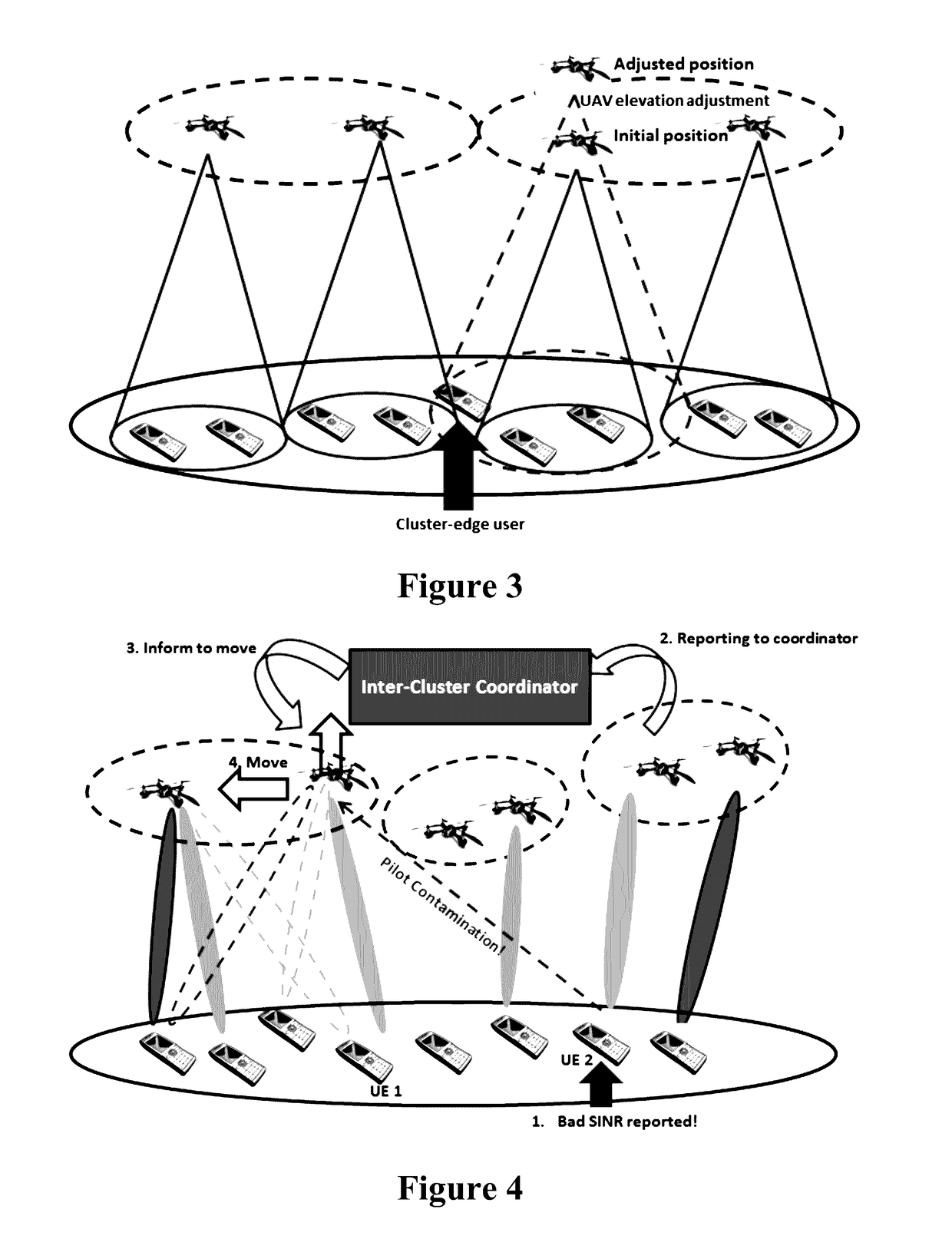Cooperative clustering for enhancing mu-massive-miso-based UAV communication
a technology of mu-massive miso and cooperative clustering, applied in process and machine control, site diversity, instruments, etc., can solve the problems of high interference of users, and achieve the effects of fast and efficient way, low cost, and rapid delivery of broadband connectivity
- Summary
- Abstract
- Description
- Claims
- Application Information
AI Technical Summary
Benefits of technology
Problems solved by technology
Method used
Image
Examples
example 1
[0156]Proof of concept experiments for embodiments of the present invention were conducted using computer simulations. In the first part of the analysis, methods according to embodiments of the present invention were validated by comparing their performance with optimum hovering locations identified through exhaustive search. Subsequently, the capacity performance of the methods was analyzed and compared with different beamforming techniques.
[0157]The simulation setup that was used is shown in FIG. 8. Two users are located in fixed locations (200, 0) m and (400, 0) m, and UAV-BSs can move within a 600×100 m grid with 5 m resolution. The height of the UAV-BSs was restricted to be between 200 m and 300 m, and the horizontal positioning was restricted between 0 m and 600 m. The simulation parameters are summarized in Table I.
[0158]Methods according to the present invention were first validated by identifying hovering locations from Algorithm 1, followed by an exhaustive search within t...
example 2
[0167]A second proof of concept experiment was done in order to assess the performance of embodiments of the present invention. The experiment included simulation results for fixed UAV-BS locations are discussed. The simulations parameters are summarized in Table I. Two
[0168]UAV-BSs, each with two users attached, were considered in the simulations.
TABLE ISimulation parameters.ParameterValueNo. of Transmit antennas, Nt32Carrier frequency, ƒc6 GHzInter-element spacing, γ0.5 λcTx power, PTx5 dBmAngle threshold, δang10−4Path loss exponent1.98
[0169]Cumulative distribution functions (CDFs) of the received power at UEs from serving UAV-BSs is shown in FIG. 14. As can be seen, when the number of transmitting antennas increases, more power is received. Further, power gain achieved at the intended user is highest with LSUBF as this aligns the beamforming vector along the channel directions.
[0170]Intra-cell interference distributions with different beamforming approaches are shown in FIG. 15. ...
PUM
 Login to View More
Login to View More Abstract
Description
Claims
Application Information
 Login to View More
Login to View More - R&D
- Intellectual Property
- Life Sciences
- Materials
- Tech Scout
- Unparalleled Data Quality
- Higher Quality Content
- 60% Fewer Hallucinations
Browse by: Latest US Patents, China's latest patents, Technical Efficacy Thesaurus, Application Domain, Technology Topic, Popular Technical Reports.
© 2025 PatSnap. All rights reserved.Legal|Privacy policy|Modern Slavery Act Transparency Statement|Sitemap|About US| Contact US: help@patsnap.com



